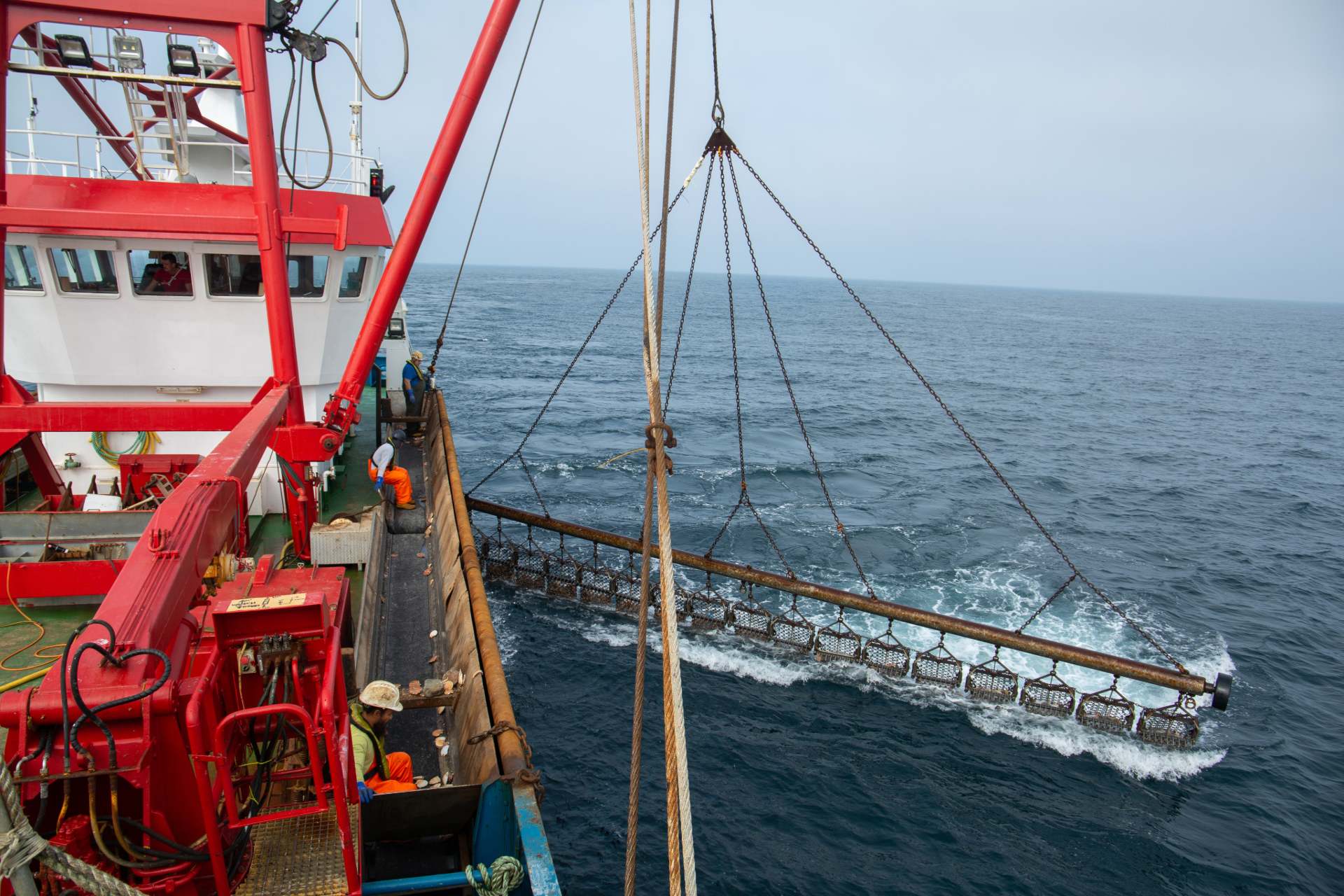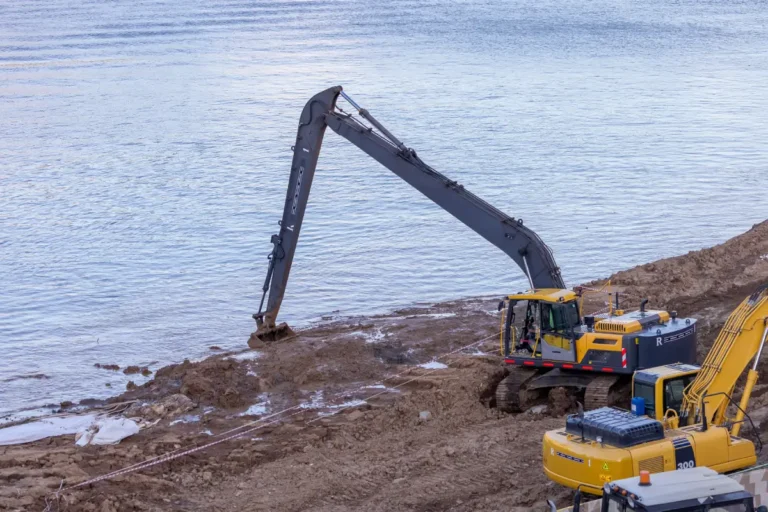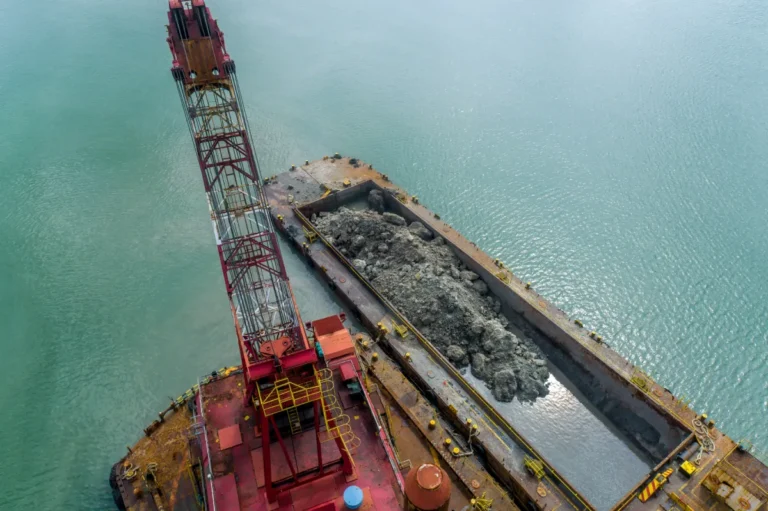To dredge a harbor means to remove accumulated sediments, debris, and other materials from the bottom of the harbor basin. Over time, natural processes like sedimentation, tidal movement, and runoff from nearby land can cause the harbor floor to rise, reducing the depth and hindering safe navigation. Dredging restores these waterways to their required depth, ensuring that vessels can operate efficiently and without the risk of grounding.
Maintaining optimal depth is especially critical in busy maritime areas and commercial ports. Without routine dredging, harbor access becomes restricted for cargo ships, fishing boats, and recreational vessels. In areas where operators regularly dredge harbor marina zones, the buildup of silt and organic matter can lead to costly disruptions and pose risks to moored vessels.
Beyond maintaining navigability, harbor dredging supports local economies by keeping shipping channels open and marinas functional. It facilitates tourism, trade, and fishing industries while supporting waterfront infrastructure development. However, using a harbor dredger comes with environmental responsibilities that cannot be overlooked. Improper dredging methods can lead to habitat destruction, water contamination, and the disruption of marine ecosystems.
This blog explores the best practices to dredge harbor environments with minimal ecological disruption. From selecting the right harbor dredger to managing sediment and monitoring environmental impact, we’ll cover eco-conscious strategies for sustaining harbor operations while preserving surrounding aquatic ecosystems. Whether you’re planning to dredge harbor marina areas or large commercial ports, these practices will help you strike the right balance between function and sustainability.
Understanding Harbor Dredging
What Is Harbor Dredging?
To dredge harbor areas means to excavate and remove accumulated materials from the bottom of harbors, ports, and adjacent waterways. This process is essential for maintaining safe and functional marine infrastructure. Whether it’s a large commercial port or a small recreational facility, dredging helps keep channels clear and accessible for all types of watercraft.
When dredging is performed in a dredge harbor marina setting, the focus is often on ensuring that smaller vessels can safely dock, maneuver, and operate in shallow zones. A harbor dredger—which can vary in size and type depending on the project—removes materials such as silt, sand, gravel, organic debris, and even human-made waste that accumulate over time.
These materials, if left unmanaged, can lead to shoaling, reduced water depth, and restricted access to key navigation routes. This not only affects vessel operations but can also disrupt the surrounding infrastructure and ecosystems.
Why It’s Necessary
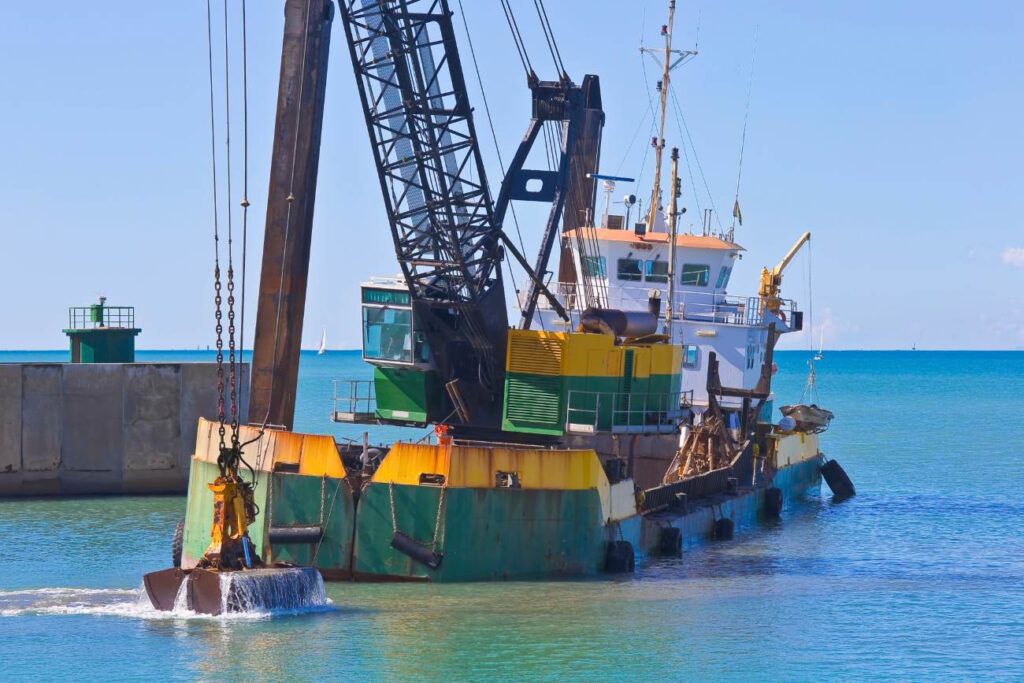
Several operational and environmental factors drive the need to dredge harbor environments:
- Maintain Safe Depth for Vessels
Over time, sediment accumulation can make water depths unpredictable. Regular dredging ensures that vessels of all sizes can enter and exit harbors safely, reducing the risk of grounding or collisions.
- Prevent Sediment Buildup in Critical Zones
Areas near docks, piers, and turning basins are particularly vulnerable to sedimentation. Using a harbor dredger in these zones keeps operations running smoothly and avoids costly downtime.
- Facilitate Commercial and Recreational Traffic
Whether supporting global trade or weekend boating, dredging keeps marine traffic flowing. Marinas rely on consistent dredging to ensure berth availability and protect boaters from hidden hazards.
Differences Between Dredging a Harbor and Dredging a Marina
While the fundamental purpose of dredging remains consistent, there are key differences in approach and execution depending on the environment:
- Scope and Scale
Commercial harbors typically involve large-scale dredging projects requiring industrial-grade harbor dredgers and extended timelines. In contrast, dredge harbor marina projects are often smaller in scope but require more precision due to tight spaces and nearby structures.
- Environmental Considerations
Marinas are often located near residential zones, wetlands, or environmentally sensitive areas. Dredging in these locations demands more stringent environmental controls to limit turbidity, protect aquatic life, and reduce noise pollution.
- Operational Challenges
When you dredge harbor marina areas, access can be limited, and maneuvering equipment in confined docks and slips requires specialized dredgers and skilled operators. Timing is also crucial to avoid peak boating seasons or breeding periods for local marine species.
Environmental Impacts of Harbor Dredging
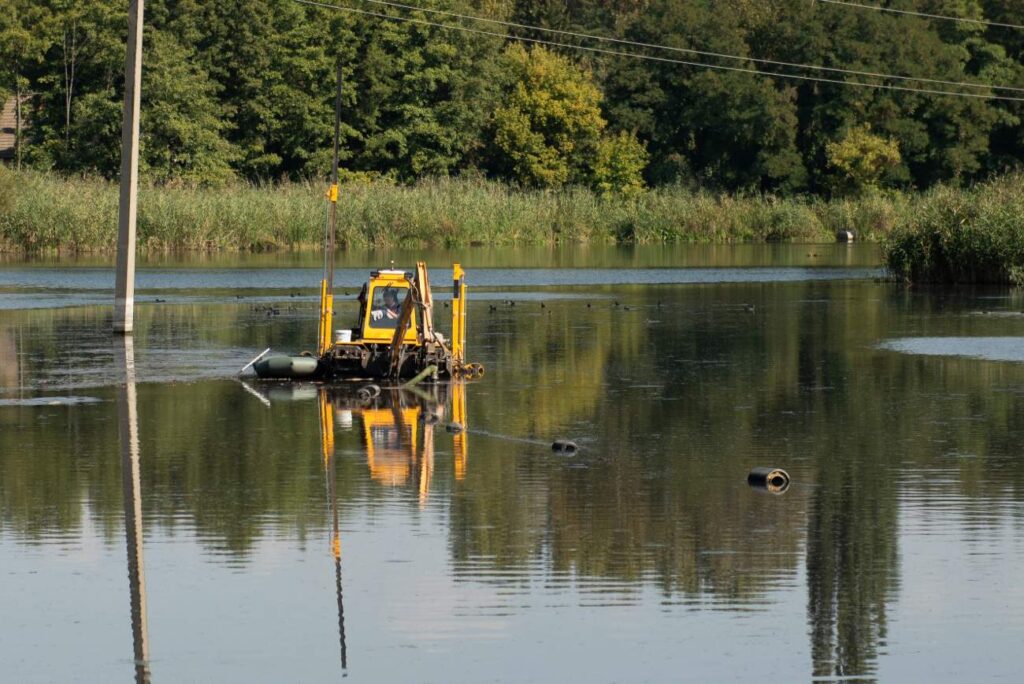
Dredging plays a vital role in maintaining maritime infrastructure, but when you dredge harbor areas—especially in sensitive zones—it’s essential to understand and mitigate the environmental consequences. The use of a harbor dredger, if not managed properly, can significantly disrupt local ecosystems, degrade water quality, and affect both human and marine life. This section outlines the major environmental impacts associated with harbor and dredge harbor marina dredging projects.
Disruption of Marine Ecosystems
One of the most immediate effects of using a harbor dredger is the temporary disturbance to marine life. The dredging process often displaces benthic organisms (those living on or in the seabed), which are crucial to the food web. Fish, crustaceans, and other species may be forced to flee the area, affecting breeding patterns and feeding behavior.
Additionally, when dredge harbor marina environments—often located near coastal wetlands or estuaries—the alteration of bottom sediments and removal of vegetation can permanently change marine habitats. This habitat modification can have long-term consequences on biodiversity and the health of aquatic ecosystems.
Sediment Plume and Turbidity
As sediments are disturbed and removed, they can become suspended in the water column, creating what’s known as a sediment plume. This increases turbidity, or cloudiness, which significantly affects water quality.
High turbidity levels can:
- Obstructs sunlight penetration, reducing photosynthesis in aquatic plants and seagrasses
- Clog fish gills and smother eggs and larvae.
- Disrupt filter-feeding organisms and alter food availability.y
When dredging in shallow or enclosed environments like dredge harbor marina zones, sediment plumes can spread more easily and take longer to dissipate, making it even more important to employ mitigation measures during dredging operations.
Contaminated Sediment
Many older harbors and industrial marinas contain layers of contaminated sediment that have built up over decades. These materials can include heavy metals, hydrocarbons, and other pollutants that pose a significant risk if disturbed.
When a harbor dredger excavates these sediments, there’s a danger of releasing toxins into the water column, potentially harming aquatic life and nearby human populations. In dredge harbor marina settings, which often have a mix of recreational and commercial activities, managing contaminated sediment becomes even more critical.
Proper testing, containment, and safe disposal practices must be in place to handle hazardous materials responsibly during dredging.
Noise and Emissions
Mechanical and hydraulic harbor dredgers generate both noise and air pollution. Underwater noise can disturb marine mammals and fish species that rely on echolocation or acoustic signals. On land, prolonged dredging operations may cause disruptions for nearby communities, especially when working near dredge harbor marina areas with residential or tourist activity.
In addition, dredging equipment emits greenhouse gases and particulate matter. The environmental footprint of dredging can be significant if older or poorly maintained dredgers are used. Choosing energy-efficient, low-emission equipment and optimizing fuel consumption are important strategies to minimize the impact.
Planning Phase: Environmental Considerations Before Dredging
Before deploying a harbor dredger or initiating any operation to dredge harbor or dredge harbor marina areas, it is essential to conduct thorough planning and environmental assessments. Effective preparation not only ensures regulatory compliance but also minimizes ecological disruption and long-term operational risks. This section outlines the critical pre-dredging steps that help align harbor maintenance with environmental stewardship.
Environmental Impact Assessment (EIA)
One of the first and most important steps when planning to dredge harbor areas is conducting an Environmental Impact Assessment (EIA). An EIA evaluates how the proposed dredging project could affect local ecosystems, water quality, and surrounding communities. These assessments provide a data-driven foundation for making informed decisions about the scope, methods, and timing of dredging activities.
For projects in dredge harbor marina environments, where aquatic life, residential zones, and tourism often coexist, EIAs are especially crucial. In many jurisdictions, EIAs are legally required before permits can be issued. The process typically includes:
- Baseline environmental studies
- Risk analysis
- Public consultations
- Recommendations for mitigation strategies
By identifying potential environmental impacts early, project managers can make adjustments to dredging plans and select the most eco-conscious approach.
Regulatory Compliance and Permitting
Compliance with local, state, and federal regulations is a mandatory part of any project involving a harbor dredger. Permits are issued by regulatory bodies such as the U.S. Army Corps of Engineers or local environmental authorities, and these permits often stipulate strict conditions related to timing, equipment, and sediment handling.
Failing to adhere to these regulations can lead to delays, fines, and environmental damage. Whether the goal is to maintain a shipping channel or dredge harbor marina slips, securing the appropriate approvals and following all regulatory guidelines ensures that the project proceeds legally and responsibly.
Site-Specific Sediment Testing
Before starting to dredge harbor areas, it’s essential to understand the physical and chemical properties of the sediment to be removed. Site-specific sediment testing identifies contamination risks such as heavy metals, hydrocarbons, or industrial byproducts. This information is critical for determining the appropriate dredging method and for planning how to safely transport, treat, or dispose of the dredged material.
In dredge harbor marina zones, sediment testing can also reveal the presence of fine organic material that may require specialized handling or containment strategies. Knowing the sediment composition helps in selecting the most effective harbor dredger while minimizing environmental disturbance.
Choosing the Right Time to Dredge
Timing is a crucial element of environmentally responsible dredging. Seasonal planning can significantly reduce the ecological impact of dredging operations. Sensitive periods—such as fish spawning seasons, bird nesting cycles, or migratory patterns—must be avoided to protect local wildlife.
When planning to dredge harbor marina zones, additional consideration is needed for peak recreational seasons, where dredging could interfere with tourism, boating, or local events. By coordinating dredging activities during off-peak times and low-impact seasons, operators can enhance both ecological protection and community satisfaction.
Best Practices to Dredge Harbor Responsibly
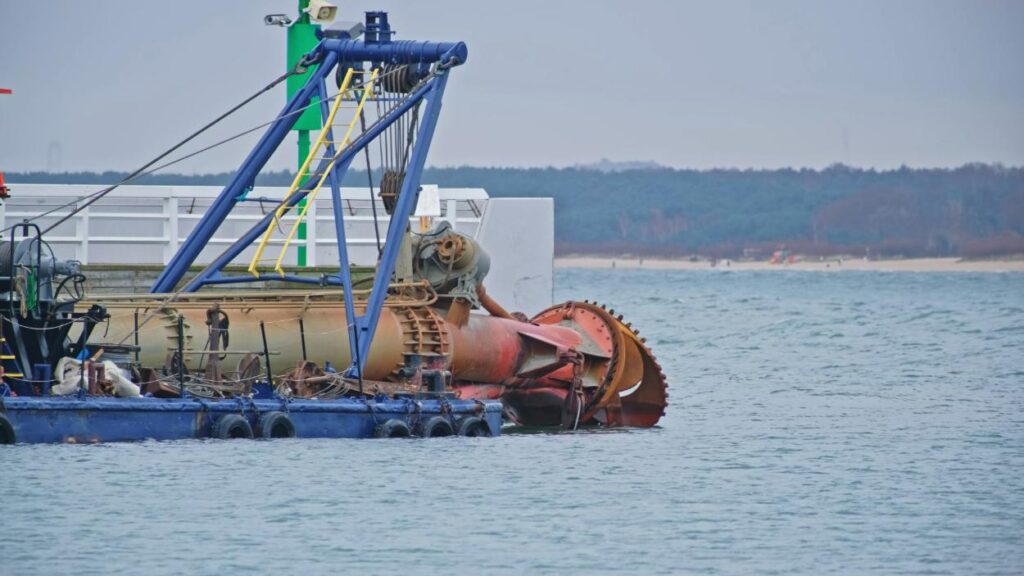
To dredge harbor environments responsibly, it’s crucial to combine operational efficiency with environmental protection. From selecting the right equipment to deploying smart monitoring tools, applying best practices ensures minimal disruption while maintaining waterway performance. Whether you’re working in a commercial shipping hub or looking to dredge harbor marina zones, the following strategies help reduce ecological impact and improve project outcomes.
Select the Appropriate Harbor Dredger
Choosing the right type of harbor dredger is the foundation of an environmentally responsible dredging operation. Two common categories of dredgers are:
- Mechanical Dredgers: These include clamshell, backhoes, and bucket dredgers. They are ideal for precise excavation in confined spaces, such as when you dredge harbor marina areas with narrow slips or dockside structures.
- Hydraulic Dredgers: These dredgers use suction or cutter suction systems to move large volumes of sediment. They are better suited for continuous operations over wide areas, such as commercial harbors or open waterways.
To dredge harbor zones with minimal impact, the equipment should be scaled appropriately. Using oversized or high-powered machinery in small marinas can cause unnecessary turbidity, while underpowered equipment may prolong the project and increase emissions. Low-impact dredgers with advanced control features offer the best balance between efficiency and environmental care.
Use of Silt Curtains and Barriers
When sediment is disturbed, it can easily spread beyond the work area and degrade nearby aquatic ecosystems. Silt curtains and turbidity barriers are essential tools for containing these plumes. Installed around the dredging zone, these floating barriers trap suspended particles and prevent them from contaminating adjacent habitats.
This is especially important in dredge harbor marina locations, where water circulation is limited and sediment dispersion can impact seagrasses, shellfish beds, or recreational zones. By using silt curtains properly, operators can drastically reduce turbidity, protect sensitive areas, and comply with environmental regulations during dredging.
Real-Time Monitoring
Modern dredging operations benefit from real-time environmental data. Turbidity sensors and GPS-based monitoring systems allow project teams to track water quality, dredger position, and sediment levels with high accuracy. These tools are essential for adaptive management, enabling quick adjustments to methods or equipment if threshold limits are approached.
When working to dredge harbor zones with sensitive ecosystems or strict compliance standards, continuous monitoring offers an extra layer of assurance. Real-time data helps avoid costly delays, regulatory penalties, and unintentional environmental damage.
Precision Dredging Techniques
Over-excavation not only wastes time and resources but can also destabilize harbor beds and increase environmental risk. Precision dredging techniques focus on removing only the necessary volume of sediment, targeting specific depths and zones with minimal disturbance.
Advanced harbor dredger systems equipped with GPS, sonar, and automated control features make this possible. Automation improves accuracy, reduces operator fatigue, and ensures that material is removed efficiently without impacting non-target areas.
In dredge harbor marina applications, where space is limited and ecological sensitivity is high, precision dredging is particularly valuable. It enables effective maintenance without disrupting the overall integrity of the marina’s ecosystem or infrastructure.
By following these best practices, dredging teams can significantly reduce environmental impact while delivering reliable results across both large harbors and small marina settings.
Sustainable Sediment Management
Responsible sediment management is a core component of any project to dredge harbor environments. Once material is removed from the harbor floor, how it’s handled can significantly influence the project’s environmental footprint. Whether you’re working in a large port or a smaller dredge harbor marina, applying sustainable practices during sediment handling ensures compliance, reduces waste, and can even create environmental benefits.
Dewatering and Treatment Onsite
After excavation, dredged material often contains a high percentage of water, making it heavy and expensive to transport or dispose of. Dewatering is the process of separating solids from water, thereby reducing volume and facilitating easier handling and treatment.
Onsite dewatering systems may include:
- Geotextile tubes: Allow water to filter out while retaining solids
- Mechanical presses and centrifuges: Speed up the drying process
- Settling ponds: Use gravity to separate sediment from water over time.
When you dredge harbor marina areas, space constraints may limit equipment choices, making compact, modular dewatering systems a preferred solution. Effective dewatering not only lowers costs but also makes it easier to assess the sediment for reuse or safe disposal.
Reuse and Beneficial Use of Dredged Sediment
Not all dredged material is waste. When clean and uncontaminated, sediment removed by a harbor dredger can be repurposed for various beneficial uses. This reduces landfill burden and turns a maintenance task into an environmental opportunity.
Common reuse applications include:
- Beach nourishment: Rebuilding eroded shorelines and enhancing coastal resilience
- Wetland restoration: Creating or reinforcing natural habitats for aquatic and bird life
- Construction fill: Providing foundational material for infrastructure projects
In dredge harbor marina projects, beneficial reuse helps build goodwill with surrounding communities and environmental agencies while also showcasing sustainability in action.
Safe Disposal of Contaminated Sediment
When sediment contains hazardous substances—such as hydrocarbons, heavy metals, or industrial pollutants—it must be managed with heightened care. Improper disposal can result in long-term environmental harm and legal liabilities.
Contaminated material is typically handled through:
- Secure landfills: Engineered to contain and isolate harmful substances
- Confined Disposal Facilities (CDFs): Specialized containment areas designed for long-term sediment storage
- Stabilization treatments: Chemical or physical processes to neutralize contaminants before disposal
Before you dredge harbor areas suspected of contamination, sediment testing is vital to determine the appropriate disposal method. Working closely with environmental regulators ensures compliance with all legal and environmental obligations.
Sustainable sediment management practices should be integrated into every stage of a dredging project—from planning to post-dredging cleanup. This ensures that both ecological and operational goals are achieved, no matter the scale of the harbor or dredge harbor marina involved.
Post-Dredging Measures for Environmental Recovery
Once the active dredging phase is complete, the job isn’t finished. Well-planned environmental recovery measures should follow any effort to dredge harbor or dredge harbor marina areas. Post-dredging activities are critical for restoring ecological balance, ensuring long-term sustainability, and maintaining the health of marine habitats affected during dredging operations.
Site Restoration
Harbor dredging, even when done responsibly, can disturb native habitats. To support ecological recovery, the restoration of affected areas is a best practice following any project that involves a harbor dredger.
Key components of site restoration include:
- Replanting Seagrass and Marine Vegetation: Reintroducing native aquatic plants helps stabilize sediment, provide a habitat for marine life, and restore biodiversity. In shallow dredge harbor marina zones, replanting seagrass beds can be particularly beneficial for supporting juvenile fish and crustaceans.
- Rebuilding Marine Habitats: In some cases, artificial reefs, oyster beds, or submerged structures may be introduced to encourage the return of marine organisms displaced by dredging.
- Stabilizing Shorelines: Dredging can sometimes weaken or alter shoreline integrity. Erosion control measures, such as riprap, vegetation buffers, or living shorelines, help prevent further degradation and protect both the environment and nearby infrastructure.
Restoration activities should be tailored to the specific ecological conditions and sediment characteristics of the area that was dredged.
Long-Term Monitoring and Maintenance
Sustainable dredging doesn’t end with excavation and restoration. Ongoing monitoring ensures that environmental recovery is on track and provides data for future decision-making. By tracking water quality, sediment levels, and habitat recovery, harbor authorities can proactively address issues before they escalate.
Best practices for long-term monitoring include:
- Water Quality Sampling: Monitoring turbidity, dissolved oxygen, and pollutant levels to assess post-dredging impact.
- Sediment Surveys: Periodic bathymetric and core sampling to detect future accumulation patterns.
- Wildlife Observations: Keeping tabs on the return of aquatic species to restored areas.
Proactive harbor management, such as sediment traps or shoreline vegetation buffers, can reduce the frequency of future dredging needs. This is especially important for dredge harbor marina environments, where maintaining navigability without constant dredging is both a logistical and ecological goal.
Integrating post-dredging recovery and monitoring into your overall strategy ensures that any use of a harbor dredger leads not only to improved navigation but also to the long-term resilience of the marine ecosystem.
Regulatory Compliance and Stakeholder Communication
Successfully executing a project to dredge harbor areas involves more than just equipment and environmental precautions—it also requires strict adherence to regulations and open communication with stakeholders. From federal permits to community outreach, maintaining transparency and legal compliance ensures smooth project execution and fosters public trust.
Adhering to Local, State, and Federal Guidelines
Before deploying a harbor dredger, it is essential to understand and follow all applicable regulatory requirements. Dredging activities are governed by a combination of local, state, and federal laws, each designed to protect waterways, aquatic life, and surrounding communities.
Working with environmental agencies—such as the U.S. Army Corps of Engineers, Environmental Protection Agency (EPA), or local coastal management authorities—ensures your plan to dredge harbor or dredge harbor marina zones meets all permitting conditions. These may include:
- Limits on the volume and location of dredged material
- Water quality standards, including turbidity thresholds
- Designate work windows to avoid sensitive periods for marine life.
- Sediment testing and disposal regulations
Failing to comply with these guidelines can result in fines, project delays, or long-term environmental damage. Therefore, collaboration with regulatory bodies from the early planning stages is essential for legal and environmental success.
Community and Stakeholder Engagement
In addition to government oversight, engaging with stakeholders is a key aspect of responsible dredging. Communities living near dredge harbor marina sites, local fishermen, boat owners, port authorities, and environmental groups all have a vested interest in how and when dredging is performed.
Clear, proactive communication helps manage expectations, address concerns, and build trust. Best practices for stakeholder engagement include:
- Public meetings and informational sessions before the project begins
- Real-time updates through websites, signage, or newsletters
- Feedback channels for residents and users to voice concerns or ask questions
Transparency and accountability are especially critical in dredge harbor marina settings, where recreational use, tourism, and residential development often intersect. By demonstrating a commitment to environmental responsibility and open dialogue, dredging operators can create a more cooperative and informed atmosphere around their projects.
Incorporating regulatory compliance and stakeholder communication into your dredging plan not only helps ensure smoother operations but also reinforces your role as a steward of both infrastructure and the environment.
Conclusion
Dredging is essential for maintaining navigable waterways, but when you dredge harbor areas—especially near sensitive environments like dredge harbor marina zones—it’s critical to balance operational needs with environmental responsibility. By selecting the right harbor dredger, adhering to regulations, minimizing ecological disruption, and engaging with stakeholders, dredging projects can be executed sustainably and effectively. Implementing best practices throughout planning, execution, and post-dredging recovery not only protects marine ecosystems but also ensures long-term functionality and community support for harbor infrastructure.


